Tavistock Hall
Tavistock and Windrush Hall: a place to gather since 1906
Tavistock Hall holds many stories. It has been a place for communities to gather together, make music, to make change happen, and to pray. Harlesden Trailblazers’ Creative Researchers wanted to explore some of the different stories held in this building.
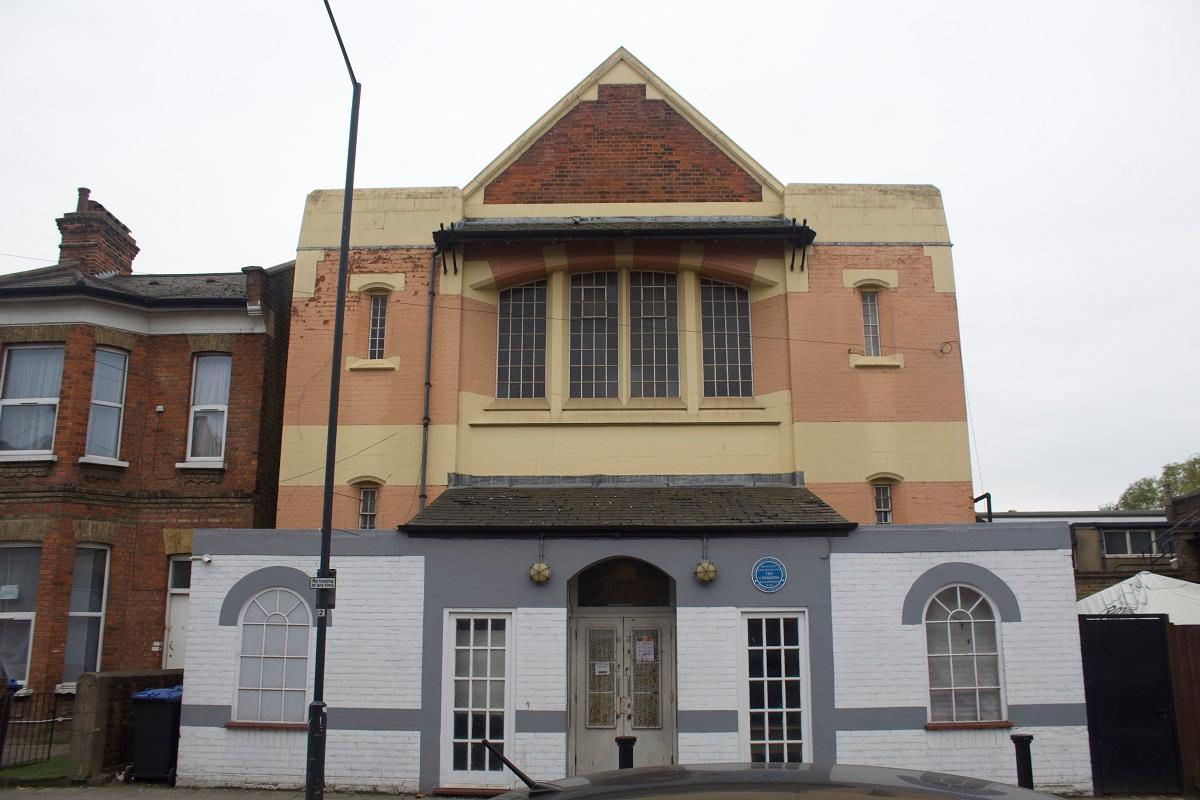
What is the plaque for the Cimarons about?
If you have walked past the building, you will have seen a plaque , celebrating the founding of the UK’s First Roots Reggae Band, in 1969. The plaque dedicated to The Cimarons was initiated by the Federation of Reggae Music, with the support of Brent Council, in 2014.
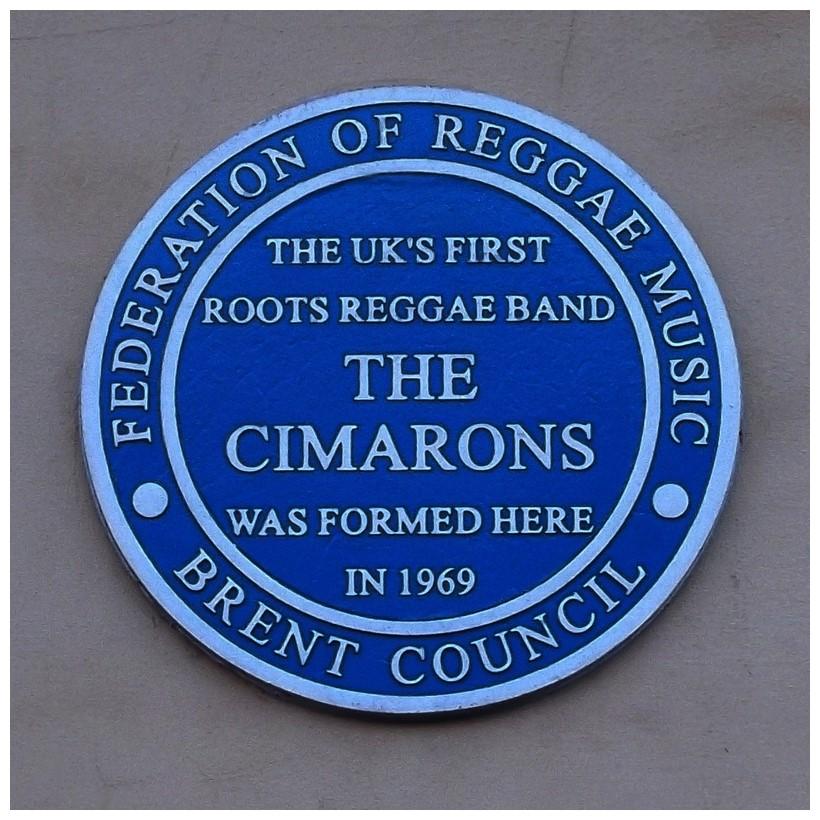
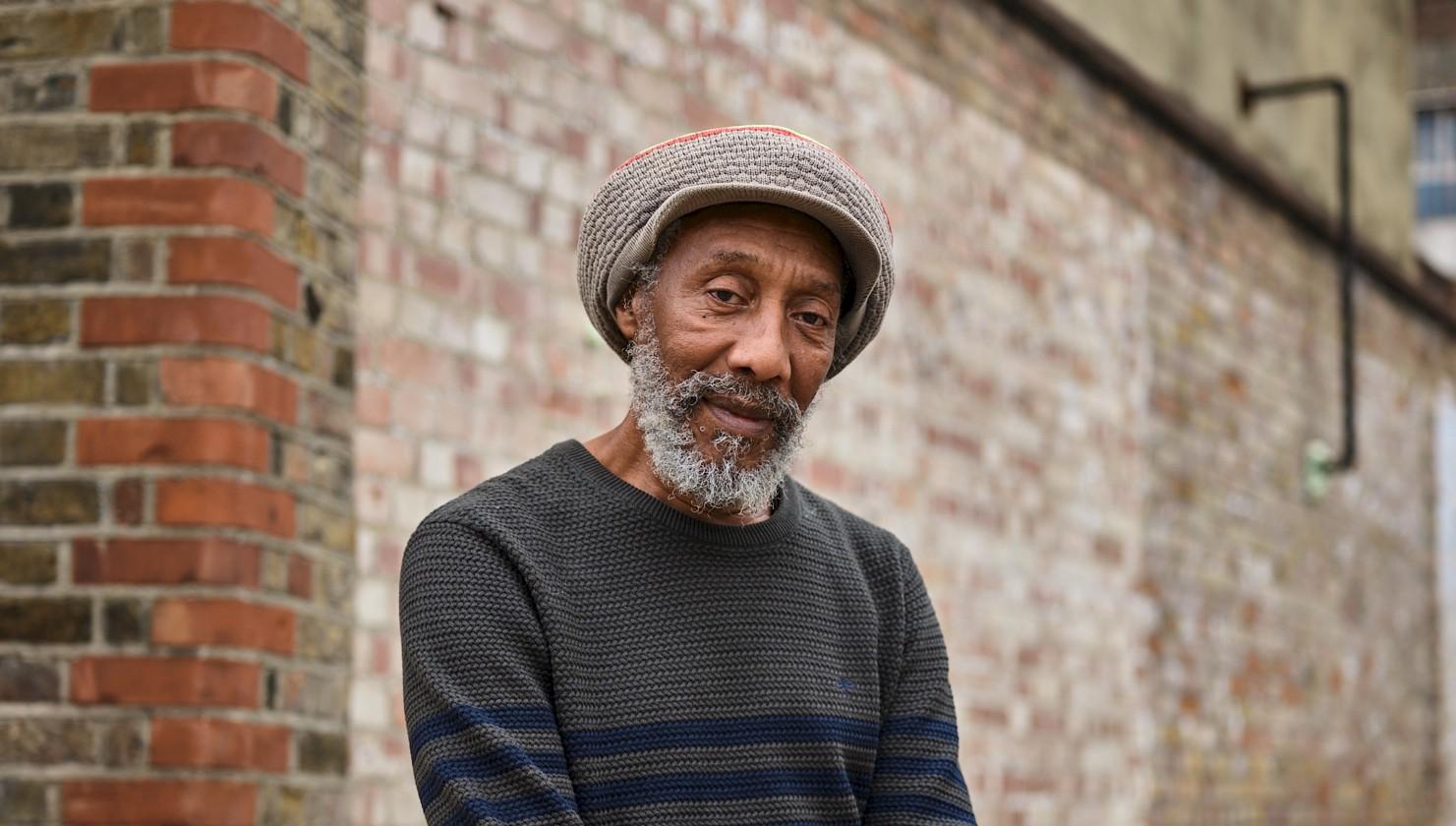
As part of Harlesden Trailblazers, we wanted to celebrate this memorial further by sharing access to an interview conducted with Locksley Gichie as part of Brent 2020, Brent’s year as the Mayor of London’s London Borough of Culture.
In the interview, Locksley mentions ‘Tavistock’, referring to Tavistock Hall. Many other artists interviewed as part of Brent 2020 also mention it as a place where they played or listened to music. He talks about his history.
Locksley came to England in 1962 at the age of 12. He went to school in Dudden Hill, and wanted to do music for a long time. The first record he bought was ‘Ride a Donkey’. He tried to form a group at school but could not find anyone. Then he went to work, and found the 31 Club in Stonebridge, the only club playing music from Jamaica.
He remembers hearing the Shadrocks at the 31 Club, it made him want to start his own band, and he bought his own acoustic guitar. At that time, he did not know how to play. He tried, but gave up, and hid his guitar in the wardrobe. Then he met a friend of his mum who helped him learn three chords – ‘D’,’C’,’G’.
He remembered there were several record shops in Harlesden. He got his first job as a printer, and then went every week to spend his money in the record shops. In 1962 (at the time of Jamaican independence, and when he had actually moved to the UK) Bob Marley’s ‘Simmer Down’ was released and that had a big impact on him.
Locksley met Franklin, his bass player one Friday evening, in front of Tavistock, and it was pouring with rain, so he was taking shelter near a Wimpy Bar restaurant on the High Street. He saw Frank holding a guitar, and went to speak to him. He asked Frank to play... but Frank couldn’t actually play it.. So Locksley took the guitar and started to play the first song he had owned, ‘Ride a Donkey’.
The band started as fun, and Locksley helped to teach Frank to play guitar, and the band came together and met and would play at the Youth Centre, at Tavistock Hall. In the recording, Locksley goes on to share how later they built up their audience through Soundsystems, and later clubs, and then through touring in Africa.
As part of the Harlesden Trailblazers project, we wanted to explore more of the history of this building to understand the context in which the Cimarons gained access to play at Tavistock. What was Tavistock Hall, and what was the Youth Centre? Why has the upstairs hall been renamed, Windrush Hall?
What is the history of Tavistock Hall and Harlesden Methodist Church?
Tavistock Hall was designed and built around 1906, as a Sunday school, for the Methodist Church on Harlesden High Street. A ‘Sunday school’ is a place for children to have religious lessons on the Christian sabbath day. The Methodist church movement started in 1700s following the teachings of John Wesley, so the church is sometimes also called ‘Wesleyan’.
The first Methodist church had been built in Harlesden in 1869.
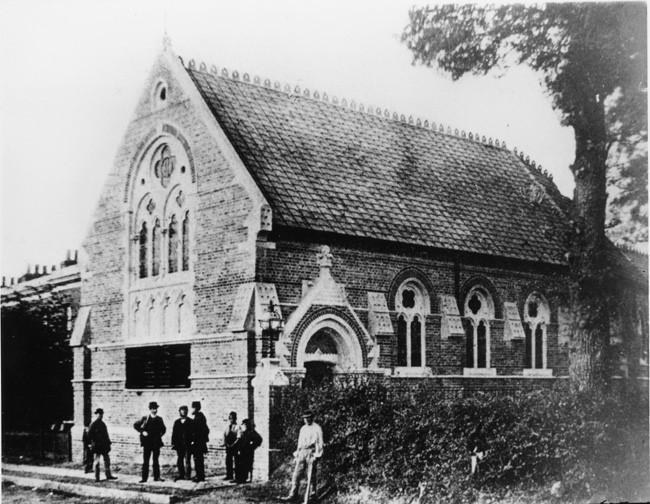
A new church was built next to it in 1882, to accommodate a much bigger congregation that had developed in Harlesden. Tavistock Hall was built for the children of this congregation.
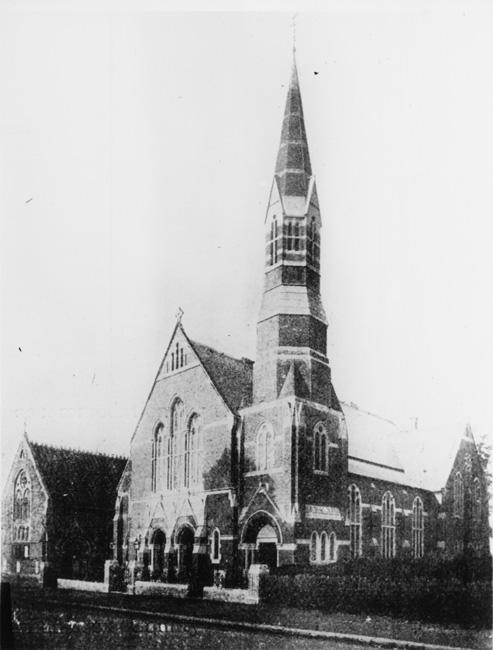
Originally, Tavistock Hall was arranged into small classrooms, which also functioned as offices and meeting rooms. There were larger meeting hall spaces for community events. The main meeting hall was on two levels, with a central area of pews and an upstairs gallery running around the edge, next to the semi-circular windows.
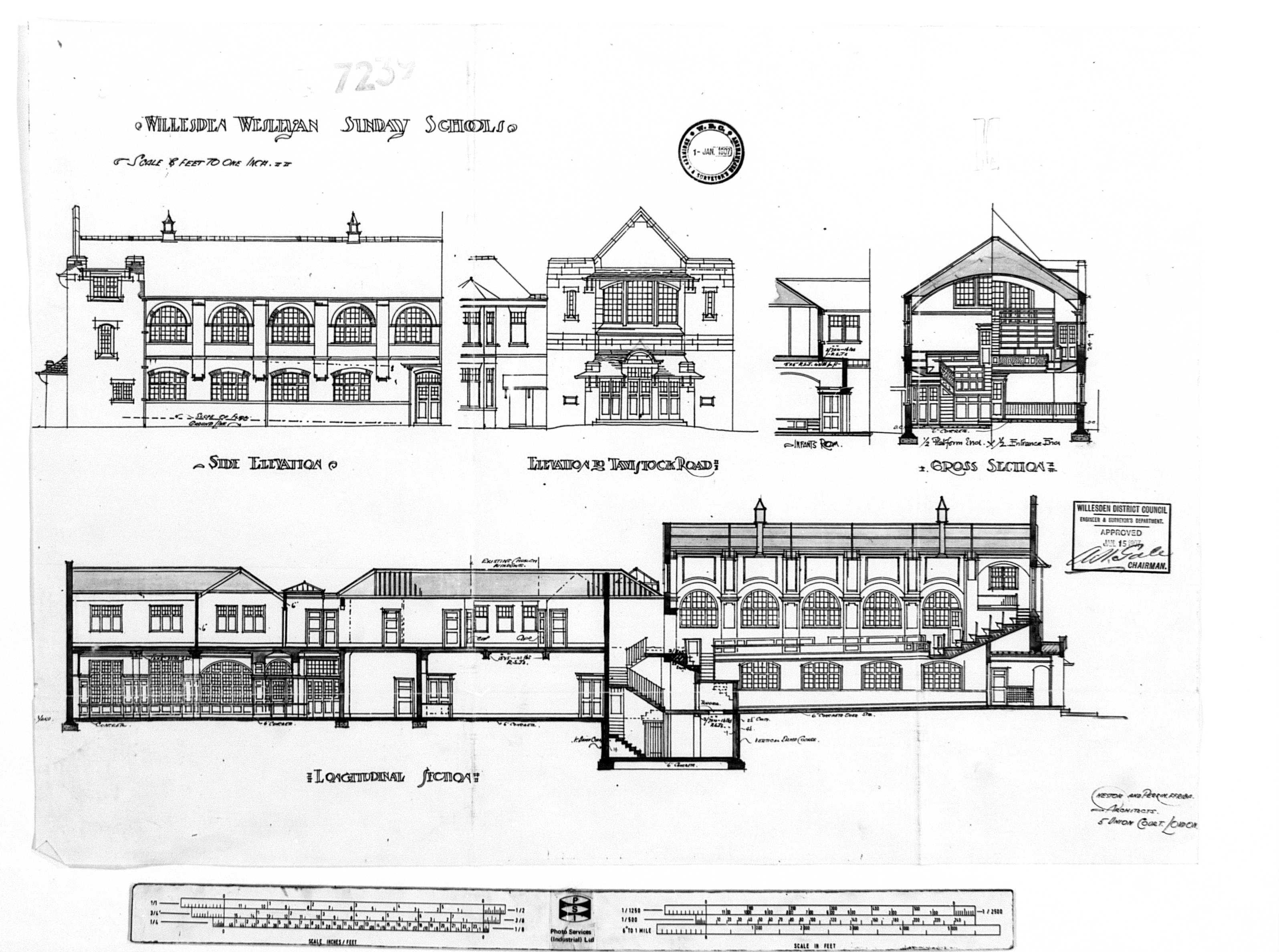
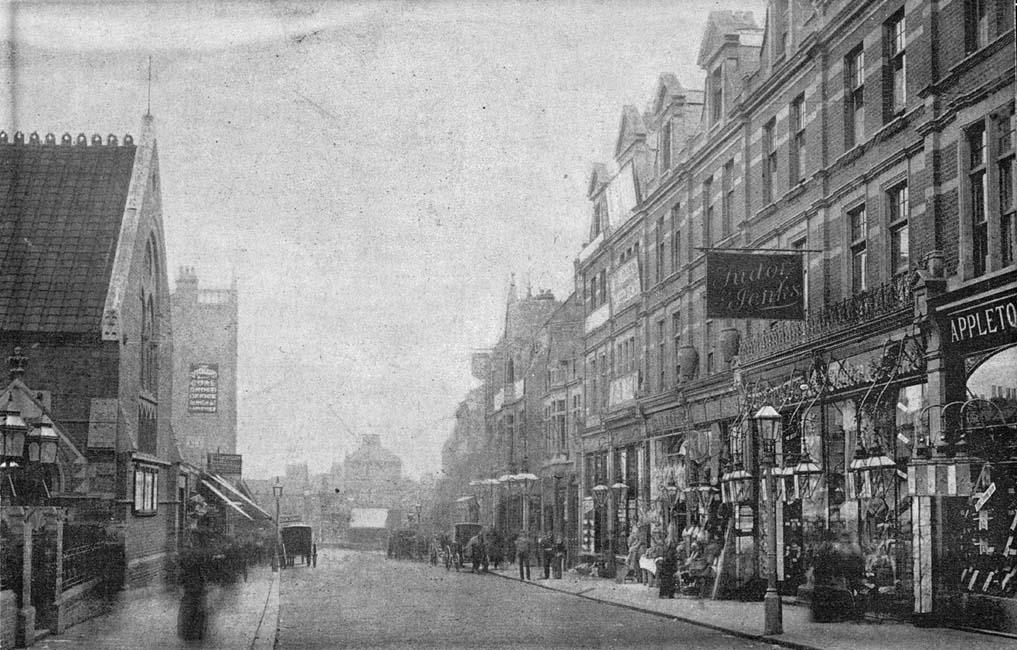
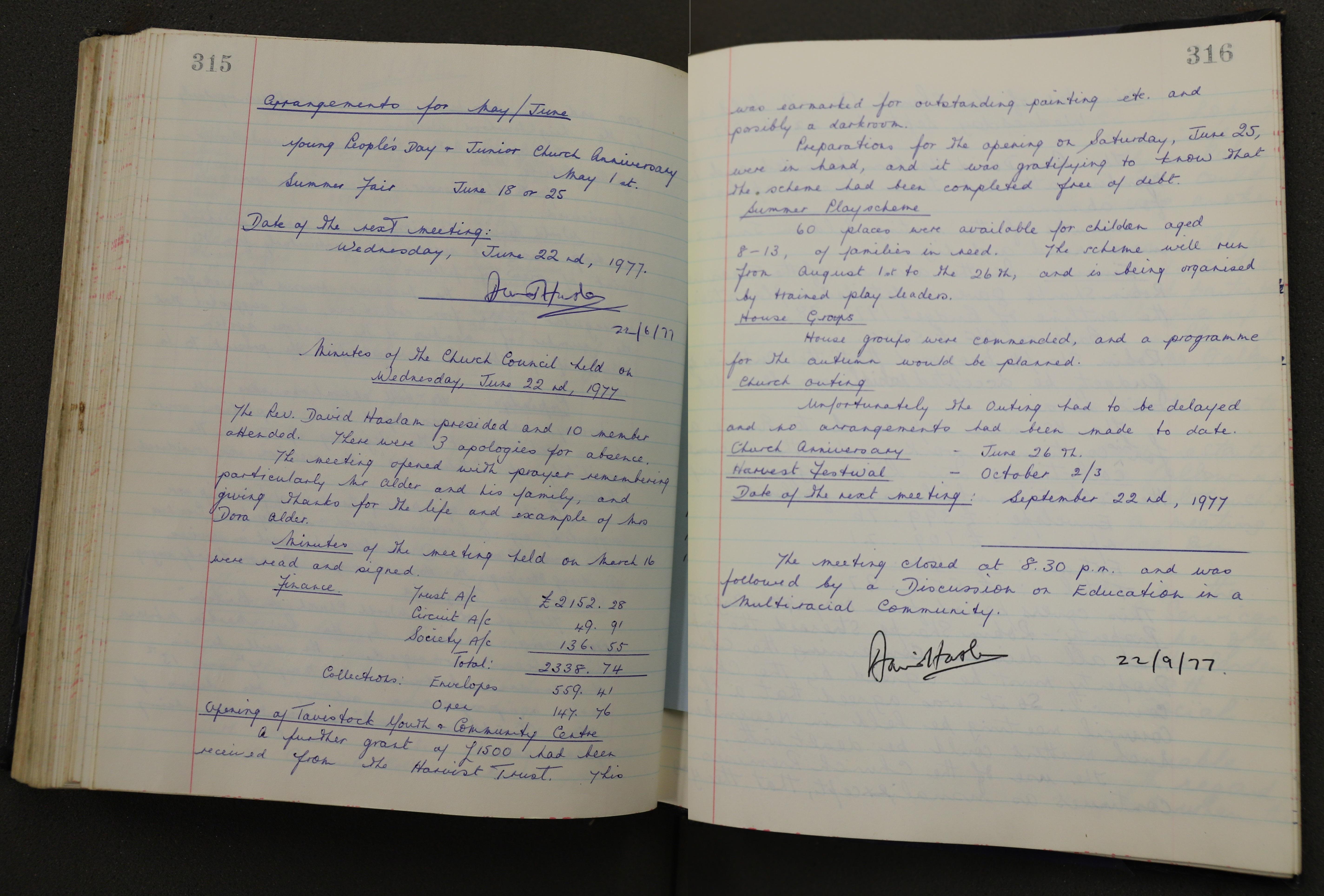
Creative Researcher, Rahima writes:
‘This book contains the records of what happened at Harlesden Methodist Church council meetings, including events at Tavistock Hall. This page shows that at this meeting, there was discussion of how to attract younger people. The minutes show planning for children and the opening of a Youth and Community Centre.’
The minutes above are signed here by David Haslam, the minister of the church in 1977. Other ministers had also worked to set up youth clubs too. Keith Johnson, minister at Harlesden from 1964-74, reflected:
“We had clubs that opened and closed, waxed and waned…but always there was an almost unconscious compulsion to have some sort of club”
“And the worst state of all, which can and does exist, is where clubs provided by the local authority put forward programmes which are suitable for middleclass, well organised groups of young people but are irrelevant to the many who want simply or mainly to listen to Reggae music.”
Keith M. Johnson, ‘Ministry in Community: Reflections on Harlesden 1964-74’
The ministers recognised the importance of enabling events that appealed to young people. In the 1960s and 1970s, it was not easy for Reggae bands to find venues that would welcome them, so Tavistock Hall and the Youth Club was important place for the development of Reggae music in Harlesden.
Due to central government cuts to councils in the late 1980s, Brent council took the decision to disband the Youth Centre at Tavistock Hall. The building still holds many memories for people from this time, the hall where the Cimarons played is still used for gatherings of all kinds, for the local community.
What happens at Tavistock Hall today?
As of 2021, Tavistock Hall continues to be used for a wide variety of activities. Many other community groups also use the hall for meetings.
Mahogany Carnival Design (another stop on this tour) sometimes come to Tavistock Hall to store and to make large costumes.
Jihan Afterschool Club meet on weekdays, providing after-school extra lessons for local children.
On Sundays, the upstairs hall is used by a Brazilian church, reflecting new communities and more recent immigration to Harlesden. Harlesden Methodist Church lets out its rooms to other smaller churches who wish to meet there as well.
The church also serves the community by organising a (sadly much needed) food bank every Friday. As of 2021, over 100 people attend the food bank every week.
Church historian Robin Sharp explained that they were hit badly by Covid-19, in the sense that it generates some of its income from room bookings, and with more groups having to meet online due to social distancing, this has proved challenging for them.
In conversation with creative researcher Rahima Mohamud, Church member Norman Mullings explained the importance of celebrating the Windrush Generation in Harlesden and the inclusivity and activism of the church.
With thanks to Rahima Mohamud and to Reverend Elaine Joseph, Robin Sharp, Norman Mullings, Ida Lewis and all from Harlesden Methodist Church.
Find out more
Keith M. Johnson, Harlesden Methodist Church, 1869-1969
Keith M. Johnson, Ministry in Community: Reflections on Harlesden 1964-74
Robin Sharp, Joyful Servants: Harlesden Methodist Church and its people, 1869-2019
Brent Museum and Archives, Pamphlet Boxes, LHC/1/REL/4.
London Borough of Culture 2020, No Bass Like Home: Reggae Map
Angus Taylor, ‘A blue plaque for Harlesden’ United Reggae Online Magazine, https://unitedreggae.com/news/n1730/071814/a-blue-plaque-in-london-for-the-cimarons
Please also see Brent Museum and Archives webpages for more information on the history of Harlesden and Brent.
